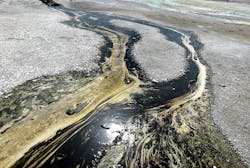Keystone XL Pipeline Route Approved
The Keystone Pipeline spilled oil in Amherst, S.D., Nov. 16, raising questions of groundwater protection. TransCanada Corp. has recovered 44,400 gal, the equivalent of 1,057 barrels, though an estimated 210,000 gal were released during the leak. The site of the oil spill lies only 20 miles from the Lake Traverse Reservation, the home of the Sisseton Wahpeton Oyate.
TransCanada issued a statement that, “As a safety precaution, TransCanada sampled one residential water well yesterday at a location about 1.5 miles from the site to alleviate any concerns — all test results were normal.”
Currently, the pipeline stretches 2,147 miles from Hardisty, Alberta to the Texas coast. Since 2010, the pipeline has suffered three leaks in North and South Dakota. Before constructing the pipeline, TransCanada released a spill risk assessment that estimated the change of a leak of more than 50 barrels to be no more than once every 11 years.
Despite the spill, Nov. 20 the Nebraska Public Service Commission approved a route for Keystone XL across the U.S. through Montana, South Dakota, and Nebraska. This route aims to avoid the Sandhills, a protected ecosystem, and the Ogallala aquifer which provides irrigation and drinking water to most of Nebraska. TransCanada asserts that the pipeline will be safer than transporting oil on railroads, the current system in place.
